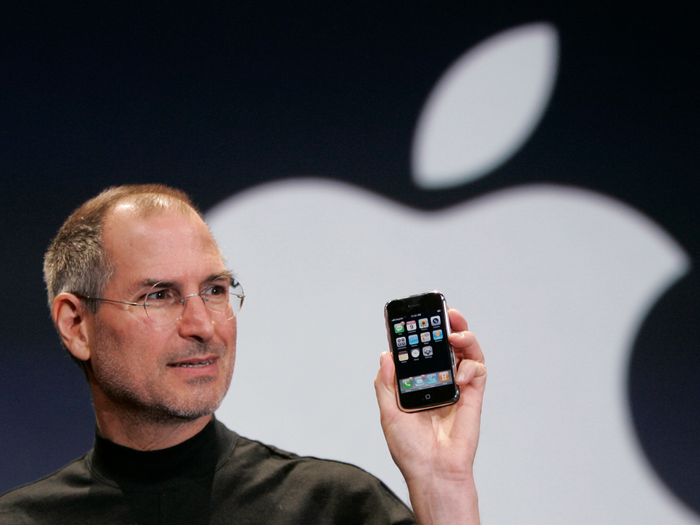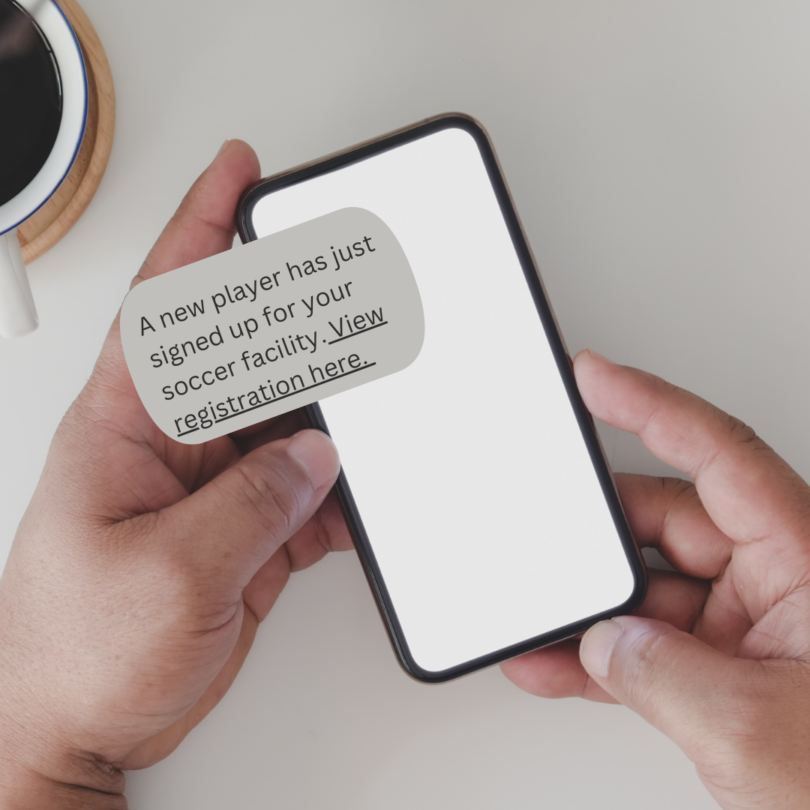Smartphone History as We Know It
Over the last two decades, smartphones have become an indispensable part of our daily lives, revolutionizing the way we communicate, work, and entertain ourselves. But where did it all begin? What was the genesis of these pocket-sized marvels that now seem inseparable from our existence? Join us on a journey through time as we explore the comprehensive history of smartphones, tracing their evolution from humble beginnings to the powerful devices we know today.
Tailored Solutions for Your Business
CloudContactAI understands that a one-size-fits-all approach doesn’t cut it, especially when catering to the diverse needs of our Enterprise+ clients. CloudContactAI sets a prime example of how consistent updates can align with the unique requirements of its Enterprise+ clients.
The Origins: When Were Smartphones Invented?
The concept of a handheld device capable of more than just making calls dates back further than you might think. While the term ‘smartphone’ was not coined until the late 20th century, the seeds of this revolutionary technology were planted much earlier. One of the earliest precursors to the modern smartphone was the IBM Simon Personal Communicator, introduced in 1994. Often regarded as the first smartphone, the IBM Simon combined the functionalities of a mobile phone with those of a personal digital assistant (PDA). When it finally made it to consumer markets, it marked a significant milestone in the evolution of smartphones, solidifying its place in the history of mobile communication devices.
The first touchscreen phone was the IBM Simon Personal Communicator, introduced in 1994. This innovative device is often hailed as the first smartphone, seamlessly blending the functionalities of a mobile phone with those of a personal digital assistant (PDA). With its revolutionary touchscreen interface, email capabilities, and rudimentary applications like a calendar and address book, the IBM Simon Personal Communicator paved the way for the modern smartphones we rely on today.
However, it wasn’t until the early 2000s that smartphones truly began to take shape as we know them today. Devices like the Nokia Communicator series and the BlackBerry line paved the way for the integration of mobile communication with productivity tools such as email, web browsing, and document editing.
The First Smartphone: What Was the First Smartphone?
While the IBM Simon was groundbreaking in its own right, many consider the honor of being the first true smartphone to belong to the Ericsson R380, released in 2000. This compact device featured a monochrome touchscreen, support for mobile internet browsing, and the ability to run third-party applications.
Around the same time, companies like Palm and Handspring were also making significant strides in developing smartphones with devices like the Palm Pilot and the Handspring VisorPhone.
The genesis of the first cell phone call in 1973 can be traced back to Motorola’s innovative work, where engineer
The Smartphone Revolution: When Were Smartphones Invented?
The early 2000s saw a flurry of innovation in the smartphone industry, with companies vying to create the next must-have device. In 2002, Research In Motion (RIM) introduced the BlackBerry 5810, which combined email, messaging, and web browsing capabilities with the familiar form factor of a traditional mobile phone.
Meanwhile, companies like Palm, Microsoft, and Nokia were also making significant strides in the development of smartphone operating systems and software platforms. Palm’s Palm OS, Microsoft’s Windows Mobile, and Nokia’s Symbian OS were among the most popular choices for early smartphones, each offering its own unique set of features and capabilities.
Of the innovations made during this period, internet access became widely available with the introduction of 3G networks in 2001. This marked a significant milestone, allowing mobile phones to connect to the internet seamlessly, making browsing and online activities more accessible. Specifically, the advent of 3G enabled smartphones to connect wirelessly to the internet, enhancing user experiences by facilitating functions such as sending email attachments and conducting video conferences directly from their mobile devices.
The integration of GPS technology in early smartphones brought about a new era of location services. In 2004, live-assisted GPS technology was introduced, enhancing location accuracy and enabling services like mapping, navigation, and location-based services to function more efficiently. This advancement made it easier for users to pinpoint their exact locations and access real-time navigation assistance.
The History of the iPhone: What Was the First Real Smartphone?
In 2007, Apple changed the game forever with the introduction of the first iPhone. With its sleek design, multi-touch interface, and revolutionary App Store, the iPhone set a new standard for what a smartphone could be. It quickly became a cultural phenomenon and cemented Apple’s place as a dominant force in the smartphone industry.
The success of the iPhone spurred fierce competition among rival manufacturers, leading to a wave of innovation and rapid advancements in smartphone technology. Companies like Samsung, HTC, and Google entered the fray, introducing their own flagship devices powered by Google’s Android operating system. A year after the iPhone’s introduction, HTC produced the first Android devices in the form of the HTC Dream. Since then, multiple companies have been in direct competition with Apple’s smartphone offerings.
Steve Jobs holding the first iPhone in January of 2007
The Modern Era: When Were Smartphones Invented and How Have They Evolved?
Since the debut of the first iPhone, smartphones have undergone dramatic transformations in both form and function. Displays have become larger and more vibrant, processors have become faster and more powerful, and cameras have become capable of capturing professional-quality photos and videos. The evolution of social media has also driven many improvements.
In addition to hardware advancements, the software ecosystem surrounding smartphones has also evolved significantly. The App Store and Google Play Store now offer millions of apps covering virtually every conceivable use case, from productivity and gaming to health and fitness.
The Best Smartphone Apps and More
The software ecosystem surrounding smartphones has also seen remarkable growth and diversification. App stores like Apple’s App Store and Google’s Play Store have become bustling marketplaces offering millions of applications catering to virtually every imaginable need and interest. From productivity tools and social media platforms to entertainment apps and games, there’s an app for almost everything.
These changes are just the tip of the iceberg regarding smartphones and business. With change happening so rapidly across the mobile landscape, at least one thing we know for sure: how businesses operate and interact with customers is fundamentally shifting. Smartphones have become essential tools not just for communication but as platforms for business transactions and customer engagement. This transformation is driven by the continuous enhancements in smartphone technology and the expanding capabilities of apps, which enable businesses to improve operational efficiency, enhance customer experiences, and tap into new markets.
Beyond third-party applications, smartphones have also become hubs for accessing digital content such as music, movies, and ebooks. Streaming services like Spotify, Netflix, and Kindle offer users instant access to a vast library of content, which can be enjoyed anytime, anywhere, directly from their smartphones. Cloud storage services have also become integral to the smartphone experience, allowing users to access their files and documents across multiple devices seamlessly.
Looking to the Future: What Lies Ahead for Smartphones?
Smartphones have revolutionized how we live, communicate, work, and entertain. The journey from the inception of the first iPhone to the present day has witnessed remarkable transformations in smartphone technology. Over time, displays have grown larger and more vibrant, processors have become faster and more powerful, and cameras have evolved to capture professional-quality photos and videos. These advancements have not only enhanced our communication experiences but have also redefined the way we work and interact with mobile devices.
The software ecosystem surrounding smartphones has also evolved significantly, offering users access to millions of applications that cater to a wide range of needs. App stores like Apple’s App Store and Google’s Play Store have become bustling marketplaces, providing a plethora of apps for productivity, gaming, health, and fitness, among other categories. These apps have become essential tools for enhancing productivity, entertainment, and overall user experience.
Looking ahead, the future of smartphones holds exciting possibilities. Emerging technologies such as 5G connectivity promise to deliver faster download and upload speeds, lower latency, and greater network capacity, unlocking new opportunities for innovation in areas such as augmented reality, virtual reality, and cloud gaming. Foldable smartphones, with flexible displays that can be folded or unfolded to transform the form factor, represent another frontier in smartphone design, offering users enhanced multitasking capabilities and new ways to interact with their devices.
Artificial intelligence (AI) is also poised to play a significant role in shaping the future of smartphones. AI-powered virtual assistants, such as Apple’s Siri, Google Assistant, and Amazon’s Alexa, are becoming increasingly sophisticated, capable of understanding natural language commands, performing tasks, and providing personalized recommendations based on user preferences and habits. AI algorithms are also being used to optimize battery life, improve camera performance, and enhance overall user experience.
In conclusion, the comprehensive history of smartphones is a testament to human ingenuity and innovation. From humble beginnings as rudimentary communication devices to powerful multimedia tools that have transformed the way we live, work, and play, smartphones have come a long way in a relatively short period of time. As we continue to push the boundaries of what’s possible, one thing remains clear: the smartphone revolution is far from over, and the future is full of exciting possibilities.
Elevate Your Business Conversations with CloudContactAI
Transform your business communication with CloudContactAI. Elevate efficiency, enhance collaboration, and embrace the future of seamless connectivity. Revolutionize the way you engage with clients and colleagues—experience the power of CloudContactAI today.



